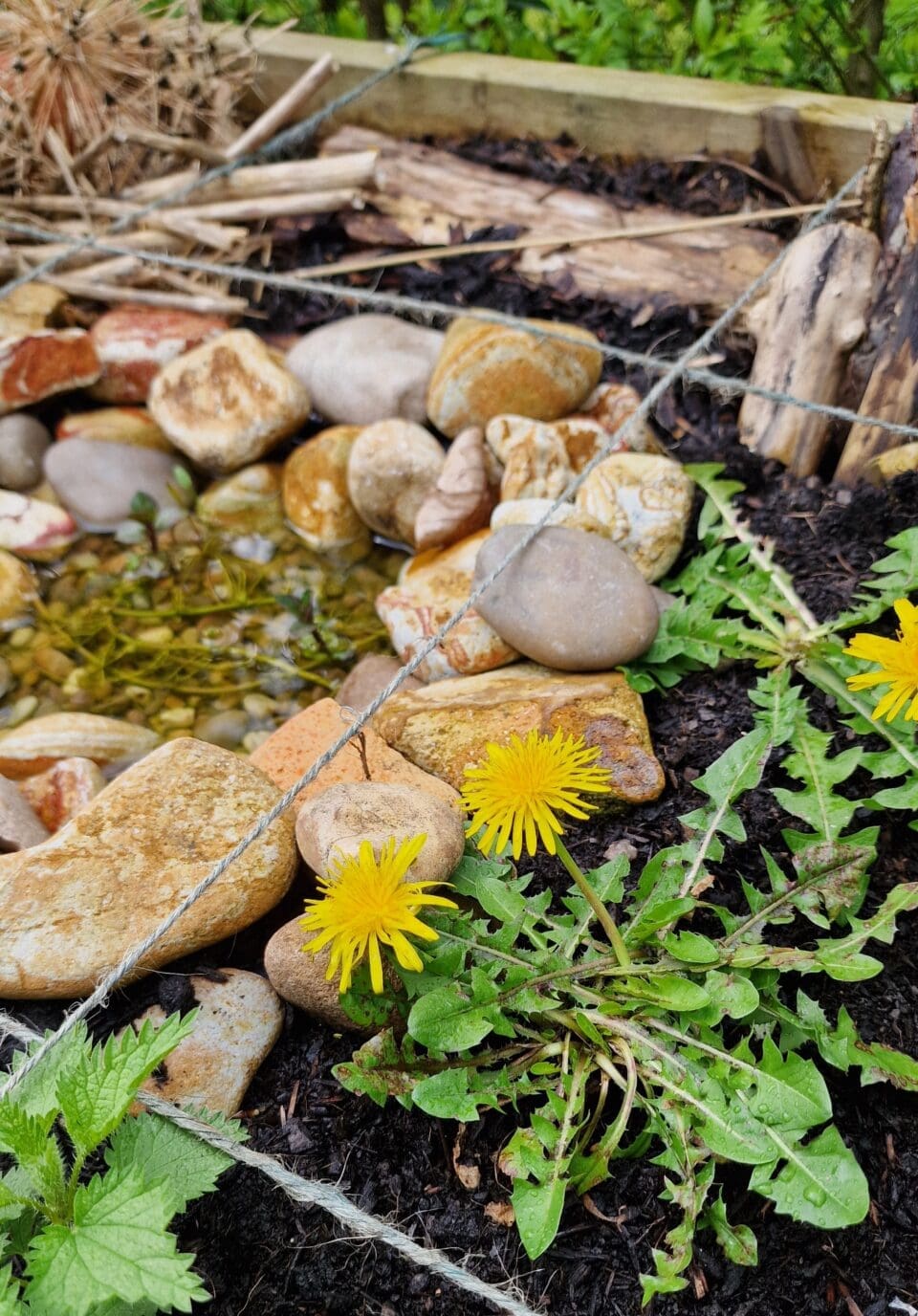It doesn’t matter what size your garden is when it comes to nurturing and protecting wildlife, says Garden Organic – as it shares a mini 1m-by-1m ‘Biodiversity Bed’ for small gardens to mark the UN’s International Day for Biological Diversity on May 22.
Head gardener at the sustainable gardening charity, Emma O’Neill, has created step-by-step instructions for making your own tiny habitat to support nature in your growing space, even if you only have a patio.
“We’re showing you only need one-square-metre of garden to provide places for wildlife to forage, shelter and bathe,” says Emma. “We’ve simply divided a raised bed into nine squares and filled each one with wildlife-supporting plants and habitats, including a tiny bee and bird bath, nesting materials, insect hotels and native plants.
“If each garden in the UK – which adds up to a quarter of the size of Wales – added a biodiversity bed or took small steps to support wildlife, imagine how that could change our landscape and benefit our wildlife.”
The Biodiversity Bed is just one way that the charity is encouraging gardeners to help halt biodiversity loss.
In its new research paper, Every Garden Matters, it has collated the latest data on biodiversity in gardens and reviewed the findings of extensive studies. It shows simple steps in backyards, balconies and allotments – such as planting a wider diversity of plants, improving soil health and creating habitats – can have a major impact on wildlife numbers.
The theme of this year’s International Day for Biological Diversity is ‘Be Part of the Plan’. Find out more at cbd.int/biodiversity-day or follow #BiodiversityDay or #PartOfThePlan on social media.
To request a copy of Garden Organic’s Every Garden Matters report, email [email protected]. To learn more wildlife friendly, organic gardening techniques head to gardenorganic.org.uk, where you can also find out how to support the charity and become a member.
MAKE YOUR OWN MINI DIVERSITY BED
Step one: gather your materials
- A raised bed, or one-metre-by-one-metre area of ground
- Broken terracotta pots or sticks, rolled up newspaper, and old compost
- String or canes
- Materials such as seedheads, cones, hollow stems, logs etc
- Shallow dish and stones
- Native or near-native plants and wildflower seeds

Step two: Make your bed. Create an area one-metre square in your garden beds, or you can use a ready-made raised bed or one recycled from old pallets or shelving. Ensure the wood has not been chemically treated. Knock together four panels into a square using a hammer and nails. Add a base if you’re planting on a patio.

Step three: Fill your bed. If you’re using a raised bed, line your bed halfway with the crocks, sticks, scrunched up newspaper, old compost and other plant materials (similar to the Hügelkultur method). As this decomposes it will release nutrients, but also improve drainage so your plants don’t get waterlogged, and means you use less compost. Top up your bed with homemade compost, mixed with a bit of grit, and good quality, bagged, peat-free compost.

Step four: Divide and conquer. Add string or canes to create your 12 mini squares and fill each one with your choice of habitats and plants. We have included:
- A shallow dish filled with water and surrounded by pebbles for bees, butterflies and birds to bathe and drink.
- Nesting materials for birds and insects such as hollow stems and dried grass.
- A small log pile for sheltering invertebrates.
- Bee homes made from canes.
- Weeds such as Urtica dioica (nettle) and Taraxacum officinale (dandelion).
- British natives such as Ajuga reptans (Bugle), Aquilegia vulgaris (Columbine), Primula vulgaris (primrose) and violas.
- Wildflower seeds.

Step five: Aftercare. Keep plants watered during dry spells. The bug hotel and log pile will gradually decompose so will occasionally need the materials to be replenished. Divide, or remove and compost, any plants that get too big for the space. Deadhead dandelions after flowering, so they don’t set seed. The wildflowers may need to be resown after a few years.







